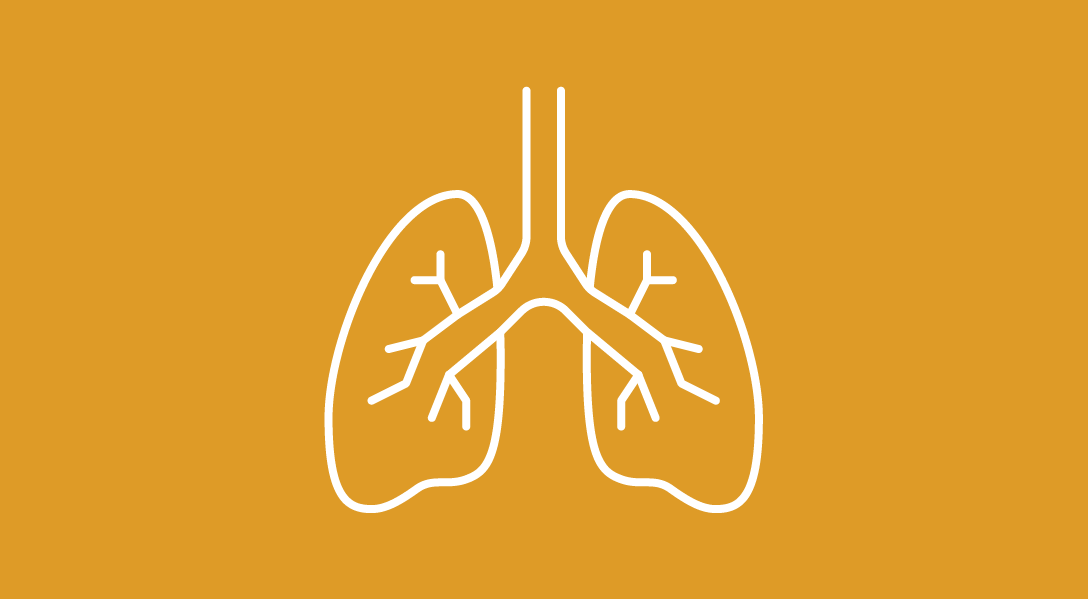Atezolizumab Appears Safe, Effective Before and After CRT for Unresectable Stage III NSCLC
Atezolizumab was safe and effective when administered before and following chemoradiation in unresectable stage III non–small cell lung cancer.
Atezolizumab Appears Safe, Effective Before and After CRT for Unresectable Stage III NSCLC

Atezolizumab (Tecentriq) administered before and following chemoradiation (CRT) was safe and efficacious, providing disease control and potential survival benefits in unresectable stage III non–small cell lung cancer (NSCLC), according to data from the phase 2 nonrandomized AFT-16 trial (NCT03102242) published in JAMA Oncology.1
After 12 weeks of neoadjuvant atezolizumab (n = 62), the disease control rate (DCR) was 74.2% (95% CI, 61.5%-84.5%), with 27.4% of patients experiencing a partial response (PR) and 46.8% achieving stable disease (SD). After 6 weeks of treatment, the DCR was 77.4% (95% CI, 65.0%-87.1%). Moreover, the objective response rate (ORR) achieved with the approach was 66.2%, and this was comprised of a complete response rate of 8.1% and a PR rate of 58.1%; 11.3% of patients had SD.
A total of 18 patients died, and the median follow-up for the remaining 44 patients was 31.2 months (range, 8.0-40.0). The median progression-free survival (PFS) was 30.0 months (95% CI, 15.8-not evaluable) with 12- and 24-month PFS rates of 68.9% (95% CI, 58.1%-81.6%) and 54.2% (95% CI, 42.7%-68.7%), respectively. The median overall survival (OS) was not reached; the respective OS rates at 12 and 24 months were 87.0% (95% CI, 79.0%-95.8%) and 73.7% (95% CI, 63.4%-85.7%).
“The AFT-16 trial is the first to our knowledge to report outcomes from neoadjuvant atezolizumab preceding definitive CRT for patients with unresectable stage III NSCLC. Neoadjuvant atezolizumab appeared to be safe with encouraging PFS and OS rates,” Helen J. Ross, MD, lead study author, director of research and clinical trials, professor in the Department of Internal Medicine, and interim chief of the Division of Hematology, Oncology, and Cellular Therapy at RUSH Cancer Center, in Chicago, Illinois, and coauthors, wrote in the paper. “…Based on the favorable outcomes, neoadjuvant atezolizumab therapy merits further study in this patient population.”
Patients with unresectable, histologically confirmed, stage IIIA/B NSCLC who were at least 18 years of age, treatment naive, have an ECOG performance status of 0 or 1, and acceptable laboratory and pulmonary function were enrolled to the single-cohort, phase 2 trial. They were required to have measurable disease by RECIST 1.1 criteria. If they had a significant autoimmune condition, heart or lung disease, or pneumonitis, they were excluded.
Treatment consisted of 1200 mg of intravenous (IV) atezolizumab given every 21 days for 4 cycles prior to CRT given at 60 Gy in 30 fractions paired with area under the curve (AUC) 2 of carboplatin and 50 mg/m2 of paclitaxel. Investigators utilized conformal 3-dimensional or intensity-modulated radiation therapy treatment planning, and this was reviewed by the Imaging and Radiation Oncology Core Rhode Island Quality Assurance Review Center.
Moreover, 2 cycles of consolidation treatment comprised of carboplatin at AUC 6 and paclitaxel at 200 mg/m2 every 21 days was given before adjuvant atezolizumab at 1200 mg every 21 days to complete 1 year of treatment. Carboplatin and paclitaxel consolidation could be omitted at the study investigator/team’s discretion.
The primary end point of the study was 12-week DCR, and key secondary end points were PFS, OS, ORR, and safety. Investigators also performed exploratory analyses of PFS and OS in those who completed concurrent CRT to obtain a rough comparison of this approach and what was reported from the pivotal phase 3 PACIFIC study (NCT02125461).
The median patient age was 63.9 years (range, 38.1-86.5). Most patients were White (77.4%), female (51.6%), former smokers (61.3%), had stage IIIA disease (53.2%), and an ECOG performance status of 0 (56.5%). Only 3.2% of patients had recurrent disease following resection. Regarding PD-L1 tumor expression, 26.5% were positive (≥1%) and 73.5% were negative (<1%); this information was missing for 13 patients.
Findings from an exploratory analysis of the patients who completed CRT (n = 44) indicated that the median PFS with the approach was NR, and the 12- and 24-month PFS rates from the end of CRT were 76.2% (95% CI, 64.3%-90.3%) and 66.3% (95% CI, 52.4%-83.9%), respectively. The 12- and 24- month OS rates from the end of CRT were 95.5% (95% CI, 89.5%-100%) and 83.8% (95% CI, 73.5%-95.5%), respectively.
Regarding safety, 48.4% of patients experienced grade 3 or higher treatment-related adverse effects (AEs). The most common treatment-related and immune-related grade 3 or 4 AEs reported in at least 5% of patients included decreased lymphocyte count (grade 3, 14.5%; 12.9%), lung infection (14.5%; 0%), decreased white blood cell count (11.3%; 3.2%), decreased neutrophil count (11.3%; 1.6%), dyspnea (8.1%; 3.2%), hypertension (8.1%; 0%), fever (6.5%; 0%), hyponatremia (6.5%; 0%), thromboembolic event (6.5%; 0%), esophagitis (4.8%; 0%), colitis (4.8%; 0%), hyperglycemia (4.8%; 0%), hypoxia (4.8%; 0%), infusion-related reaction (4.8%; 0%), pneumonitis (4.8%; 0%), vomiting (4.8%; 0%), decreased platelet count (3.2%; 3.2%), upper respiratory tract infection (1.6%; 1.6%), sepsis (0%; 4.8%), increased aspartate aminotransferase (0%; 1.6%), Guillain-Barré syndrome (0%; 1.6%), hypotension (0%; 1.6%), pericardial effusion (0%; 1.6%), respiratory failure (0%; 1.6%), treatment-associated secondary malignant neoplasm (0%; 1.6%), and ventricular tachycardia (0%; 1.6%). Two grade 5 effects occurred in the form of pneumonitis and sepsis.
AEs led to study therapy discontinuation for 19.4% of patients. In these 12 patients, the respective 12- and 24-month OS rates with the regimen were 90.9% (95% CI, 75.4%-100%) and 70.1% (95% CI, 46.5%-100%).
Investigators noted that the study has all the limitations that come with a single-arm, phase 2 trial. “There is no simultaneous control group,” they concluded.
Reference
Ross HJ, Kozono D, Wang XF, et al. Atezolizumab before and after chemoradiation for unresectable stage III non-small cell lung cancer: a phase II nonrandomized clinical trial. JAMA Oncol. Published online July 25, 2024. doi:10.1001/jamaoncol.2024.1897


